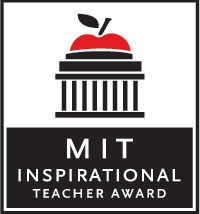Strategy vs Technique
Teaching is like driving a motorcycle. They both require one’s full attention, instant decision-making, acceptance of serious consequences for your own actions and those of others, and there simply are not any do-overs. In fact, when this idea about the similarity between the two activities came into my mind on the drive home from school recently, I set the thought aside in order to return my awareness to the road. It has to be that way.
When I got home and let my mind wander again, I recognized one of the forces pushing this idea into my consciousness. I just started reading “Teach Like A Champion” by NYT-featured charter school guy Doug Lemov. After my own experience teaching in a charter school in a charter network for two years, I’m somewhat skeptical of these organizations and people that work in them. But everything that I’ve read so far suggests that he’s the real deal. For example, in the introduction he totally nails a pet peeve that I hadn’t even fully articulated:
I call these tools “techniques,” not “strategies,” even though the teaching profession tends to use the latter term. To me, a strategy is a generalized approach to problems, a way to inform decisions. A technique is a thing you say or do in a particular way.
I’m quite happy to have this distinction. To me, strategy is the plan to achieve the overall goal. On the motorcycle, my goal is to arrive at the destination, on time, alive, and dry. The strategy is my plan for the route I’ll take, with contingencies for road construction, detours, or other problems. In the classroom, my goal is for students to develop specific skills and knowledge about the subject. The strategy comes in the form of a “scope and sequence” document, a plan for how much of what I’ll teach in what order.
Then there’s technique, which is the moment-by-moment application of skill in service of the strategy. On the motorcycle, this means things like: Chunk of wood in the road, push forward with right hand to swerve right, don’t leave the lane because there’s a car over there, obstacle passed, move back to the center of the lane. Or perhaps: Coming up to a stop sign, engine is still a little cold, use third and fourth fingers to brake while twisting with the thumb and index to keep the throttle open a little extra, put foot down. Some of these techniques have names, like downshifting or countersteering or throttle blipping. (Yes, blipping. I love it.) Some maybe don’t. In teaching, there have been a lot of techniques (which, as Lemov points out, people like to call “strategies”) pushed as being “effective”, but not a lot of discussion or analysis of how to actually apply or perform the technique.
I think the misnomer — calling techniques strategies — might have something to do with this problem. Strategies are things you think about, decisions that direct your other actions, plans you cogitate over. Techniques are things you do, that you might improve with practice day by day, skills you work on. I think it’s a huge step forward for the profession to talk about both our techniques and our strategies, and I think that techniques have by far been given the short shrift. I welcome the Lemov book as a start at building a common vocabulary for some of things that, like motorcycle driving techniques, have become almost subconscious for teachers who do them day in and day out.
As long as I’m making up analogies, here’s another one that might hit closer to home for non-motorcycling computer scientists: Teach Like A Champion is to instruction what Design Patterns is to programming. The Gang of Four didn’t tell us how to build specific applications, and Lemov doesn’t tell us how to teach specific subjects. What both of them actually do is point out the problems that experienced practitioners have seen again and again, in the form of solutions with some notes about how the various solutions could fit together and compliment one another. I think this is exciting! In the same way that Christopher Alexander’s original book, A Pattern Language, opened the door for beginning architects to start to see the world through the eyes of masters, and established a shorthand vocabulary for talking about small, specific bundles of intention and approach, this book could help teachers of all stripes begin to talk more easily about what we’re hoping to do in our classrooms and specifically how we’re trying to get there.











Leave a comment